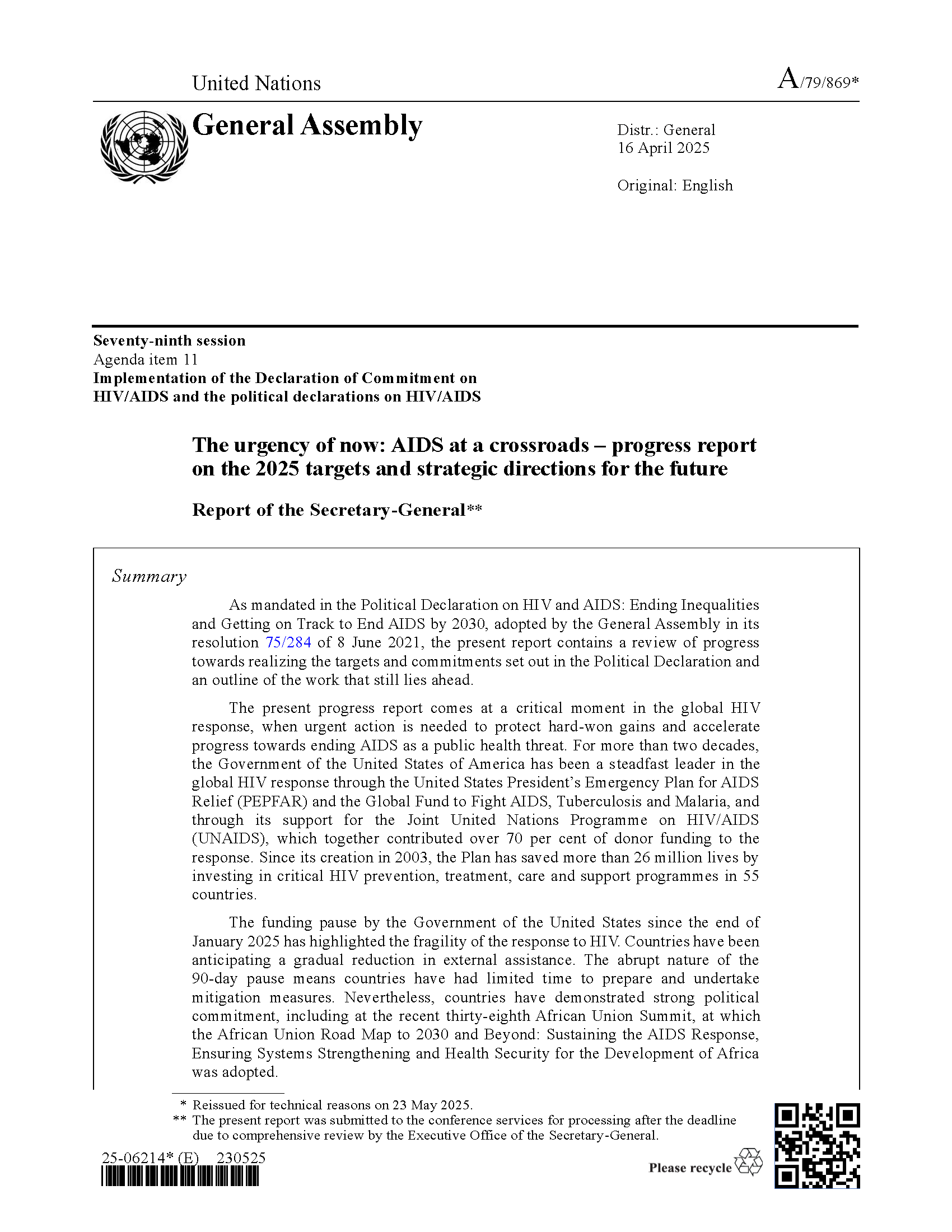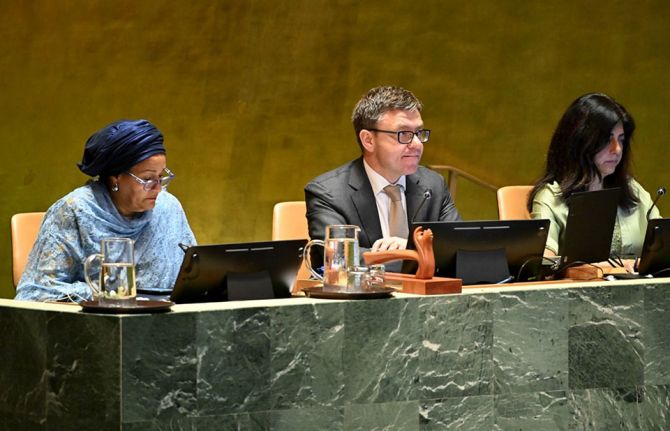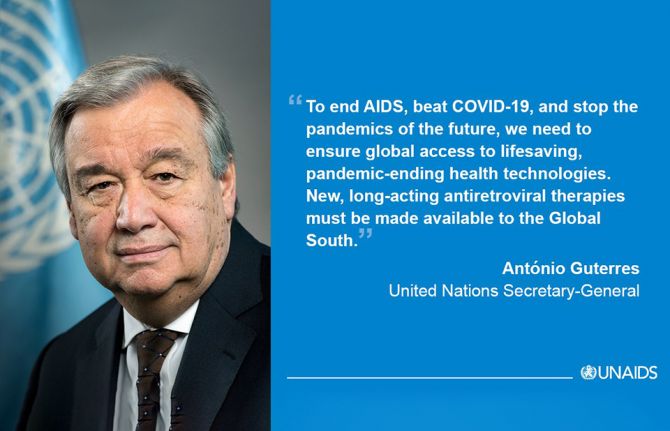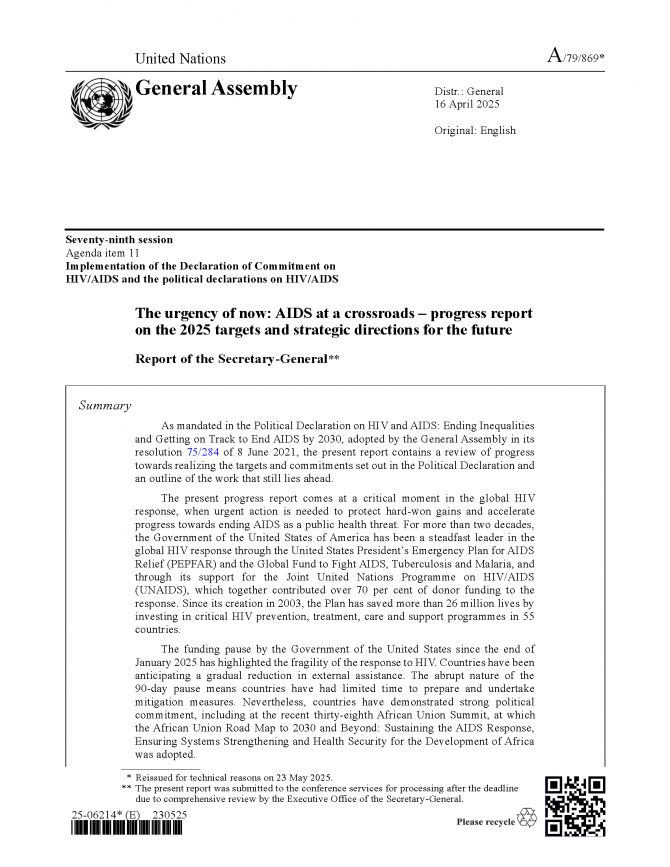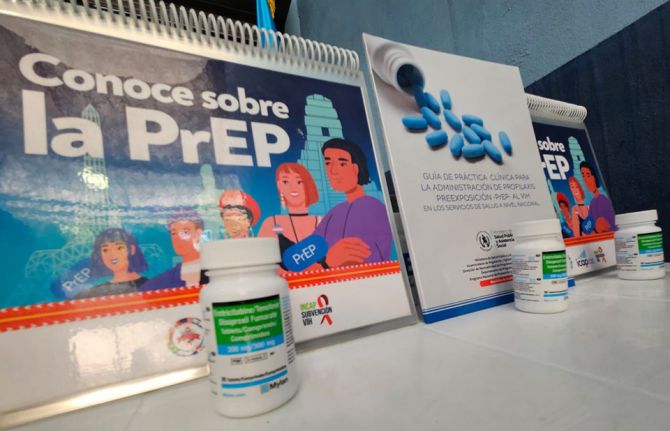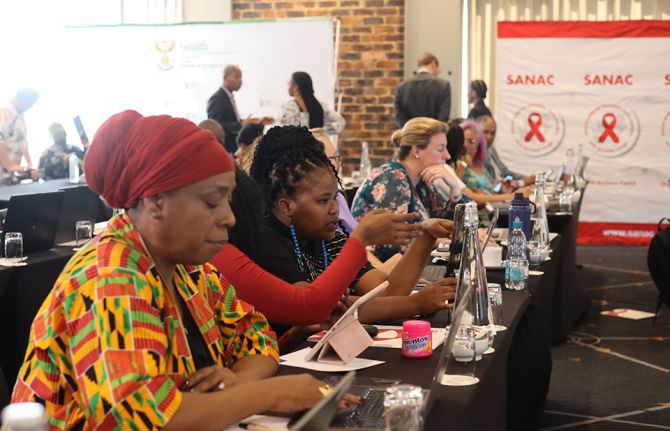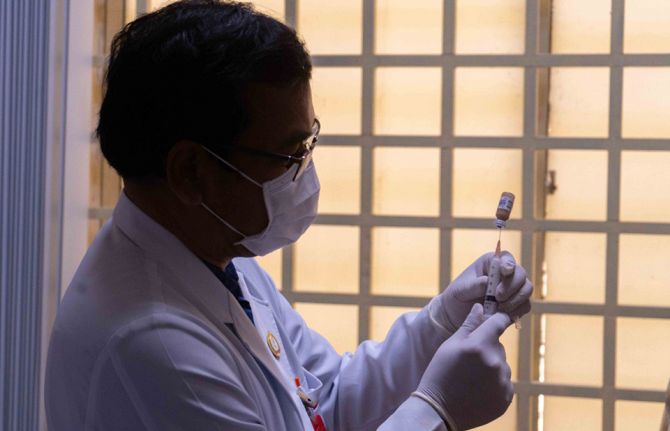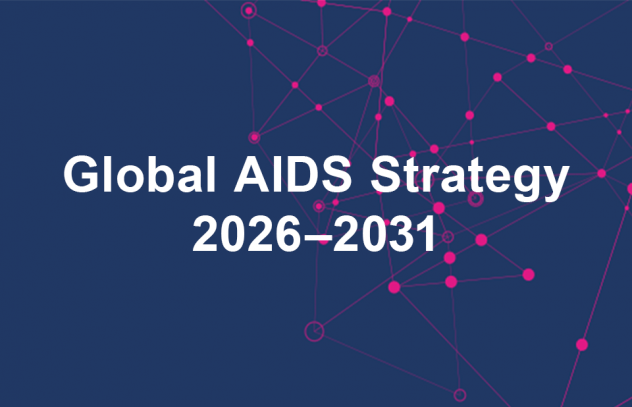
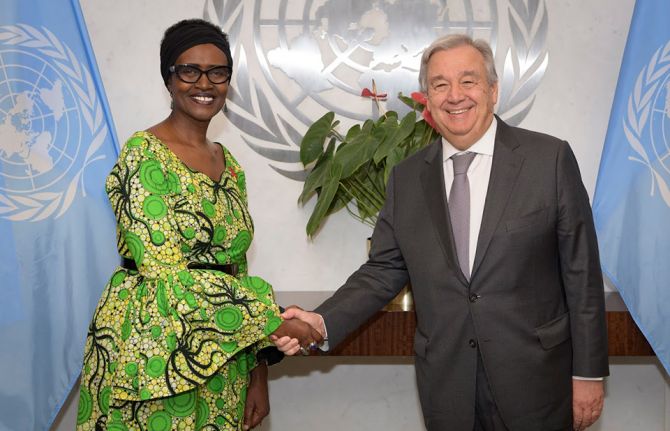
Feature Story
United Nations Secretary-General’s report on HIV
28 May 2025
28 May 2025 28 May 2025The United Nations Secretary-General António Guterres will present his report on HIV to the 79th United Nations General Assembly at the UN in New York on 5 June 2025.
The report, The urgency of now: AIDS at a crossroads – progress report on the 2025 targets and strategic directions for the future, contains a review of progress towards realizing the targets and commitments set out in the 2021 Political Declaration on HIV/AIDS and an outline of the work that still lies ahead.
It comes at a critical moment in the global HIV response, when urgent action is needed to protect the hard-won gains and accelerate progress towards ending AIDS as a public health threat.
UNAIDS has been supporting countries to gradually reduce their reliance on external assistance.
The current Global AIDS Strategy 2021–2026 has led the HIV response with a bold vision of ending inequalities that continue to fuel the epidemic. The midterm review of the Strategy, published as part of the annual Global AIDS Update in July 2024, highlighted key achievements and remaining challenges to inform the development of the next phase of the response.
Under the current strategy, fewer people acquired HIV in 2023 than at any point since the late 1980s. Over 30 million people were receiving life-saving antiretroviral therapy, reducing AIDS-related deaths to their lowest level since the peak of 2004. Significant gains have been made in sub-Saharan Africa, underscoring the power of existing interventions to end AIDS as a public health threat by 2030. As the United Nations approaches its eightieth anniversary, the results of the HIV response stand as a powerful testament to the impact of multilateral action and must be protected.
Amid recent challenges and the fragility of the HIV response, the world is falling behind in achieving the 2025 HIV targets. Obstacles to accessing treatment, insufficient prevention programming, a failure to adequately support the work of communities, rising inequalities and a lack of political will and financial support threaten the response.
The next Global AIDS Strategy, for the period 2026–2031, led by UNAIDS, is being developed at a time when the response to the HIV epidemic is at a crossroads. The strategy will be among the most important in 40 years of response to the pandemic. Developed in a context of instability for many countries, in particular with regard to HIV-related funding, the strategy will be crucial for accelerating the achievement of the 2030 Agenda for Sustainable Development and setting the foundation for a sustainable response to HIV post-2030.
This report is also available in Arabic, Chinese, French, Russian and Spanish.
2025 Report of the Secretary-General
Documents
2025 report of the Secretary-General on the Implementation of the Declaration of Commitment on HIV/AIDS and the political declarations on HIV/AIDS
28 May 2025
Report of the Secretary-General - Implementation of the Declaration of Commitment on HIV/AIDS and the political declarations on HIV/AIDS - The urgency of now: AIDS at a crossroads – progress report on the 2025 targets and strategic directions for the future - A/79/869 -General Assembly - 16 April 2025. This document is also available in Arabic, Chinese, French, Russian and Spanish.

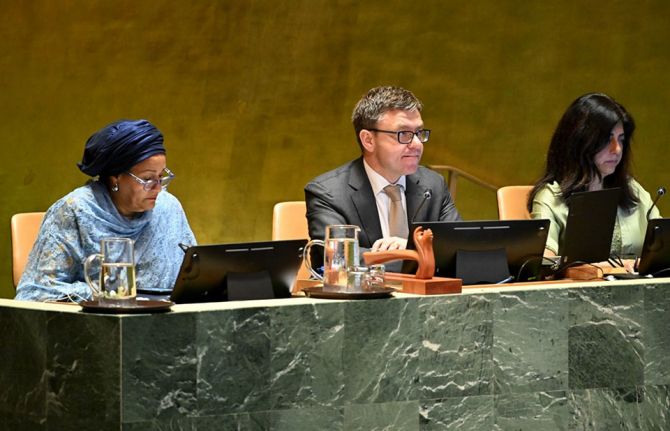
Feature Story
United Nations General Assembly debate highlights the need for urgent action to ensure that progress in the HIV response is accelerated and sustained
26 June 2024
26 June 2024 26 June 2024On 19 June 2024, the United Nations General Assembly convened to evaluate the progress made in the response to the AIDS epidemic. The yearly session provided a platform for Member States to reflect on achievements, confront persistent barriers, and chart a course forward towards ending AIDS by 2030. The UN Secretary-General’s progress report formed the basis of the debate.
Member States celebrated the significant achievements towards ending AIDS, while highlighting ongoing challenges that must be overcome to reach the promise of ending AIDS as a public health threat by 2030.
The commitment to the 95-95-95 targets and the progress made in eliminating vertical transmission of HIV, especially through the use of decentralized community-based services, were highlighted as pivotal to the success of the HIV response.
Many member states stressed the crucial role that promoting a human rights-centered approach has had in the fight against HIV. They highlighted the significance of comprehensive multi-sectoral responses, including education on sexuality and robust support for sexual and reproductive health and rights. They pointed to the harm of actions that undermine gender equality and LGBTQI+ rights. They emphasized the shared duty of every country to protect everyone’s human rights.
The need for continued global solidarity and enhanced multilateral cooperation was emphasized as key to tackling the remaining challenges. Calls for increased domestic and international funding were echoed, noting that sustained investment is crucial to maintaining progress and for expanding access to innovative prevention and treatment options.
The UN General Assembly annual review served as a poignant reminder of the collective responsibility to uphold the rights and dignity of all people affected by HIV.
Inspired by the lessons learnt from the AIDS response, the upcoming Summit of the Future scheduled for September 2024 will explore how common challenges can be overcome.
Against a backdrop of geopolitical shifts and economic uncertainties, the HIV response serves as a beacon of how multilateral solidarity saves and transforms lives.
Documents
2024 Report of the UN Secretary-General on the Implementation of the Declaration of Commitment on HIV/AIDS and the political declarations on HIV/AIDS (Seventy-eighth session of the General Assembly) A/78/883
20 May 2024

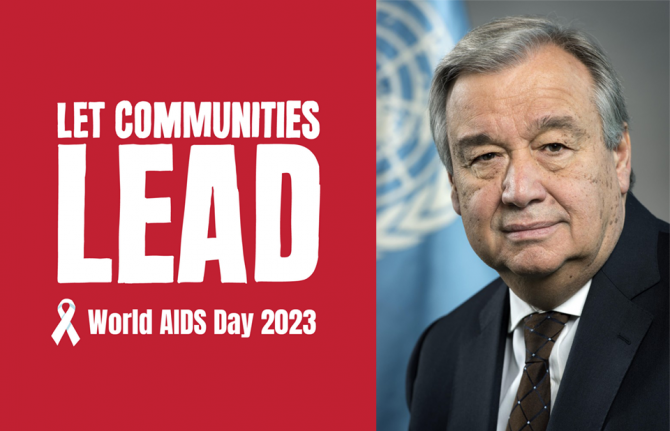
Press Statement
UN Secretary-General's message on World AIDS Day 2023
27 November 2023 27 November 20231 December 2023
World AIDS Day arrives at a defining moment.
AIDS-related deaths have fallen by almost 70 per cent since their peak in 2004, and new HIV infections are at the lowest point since the 1980s.
But AIDS still takes a life every minute.
We can — and must — end AIDS as a public health threat by 2030.
Reaching this goal means heeding this year’s theme: Let Communities Lead.
The path to ending AIDS runs through communities.
From connecting people to the treatment, services and support they need — to the grassroots activism pushing for action so all people can realize their right to health.
Supporting those on the frontlines of the battle against AIDS is how we win.
That means placing community leadership at the centre of HIV plans, programmes, budgets and monitoring efforts.
We must also remove barriers to community leadership, and ensure space for local civil society groups to take forward their vital work.
Above all, we need funding.
The AIDS response in low and middle-income countries needs over 8 billion dollars more per year to be fully funded.
This must include scaled-up funding for local programmes led by people living with HIV, and prevention initiatives led by communities.
AIDS is beatable.
Let’s finish the job by supporting communities to end this scourge in their neighbourhoods, their countries and around the world.
Documents
2023 Report of the UN Secretary-General on the Implementation of the Declaration of Commitment on HIV/AIDS and the political declarations on HIV/AIDS (Seventy-seventh session of the General Assembly) A/77/877
08 May 2023
Despite progress, AIDS, which claimed one life every minute in 2021, remains the fourth leading cause of death in Africa. Some earlier gains in action against HIV have stalled and the overall pace of progress in ending the AIDS pandemic is sl owing, owing to faltering political will, funding constraints, fragile public health systems and a failure to confront the injustices and inequalities that fuel the pandemic. Also available in Arabic and Chinese.
Documents
2022 Report of the UN Secretary-General on the Implementation of the Declaration of Commitment on HIV/AIDS and the political declarations on HIV/AIDS (Seventy-sixth session of the General Assembly) A/76/783
12 May 2022
Measures to slow the spread of the COVID-19 virus and the significant additional strain the new pandemic has placed on health systems have disrupted HIV services. In many countries, however, the challenges of COVID-19 have also led to a positive acceleration of differentiated service delivery, including community-based and community-led services. It is critical to maintain this momentum, and to prioritize the removal of societal barriers to services and the empowerment of communities in greatest need of services. Depending on the place and context, these populations include women and girls, gay men and other men who have sex with men, transgender people, sex workers, people who use drugs, prisoners, migrants, refugees and other displaced persons. A common resource gap across nearly all regions is funding for HIV prevention among key populations at higher risk of HIV infection.

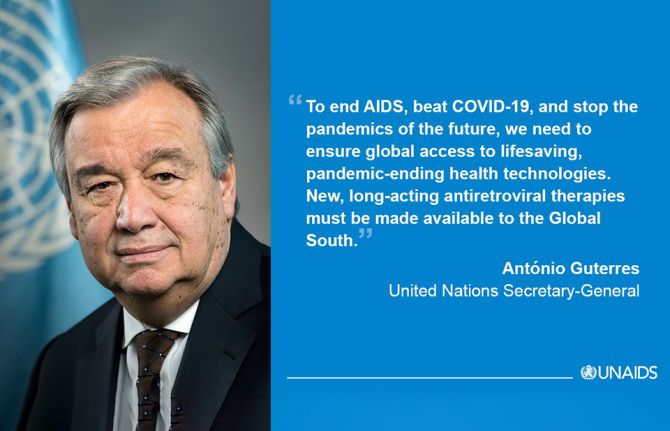
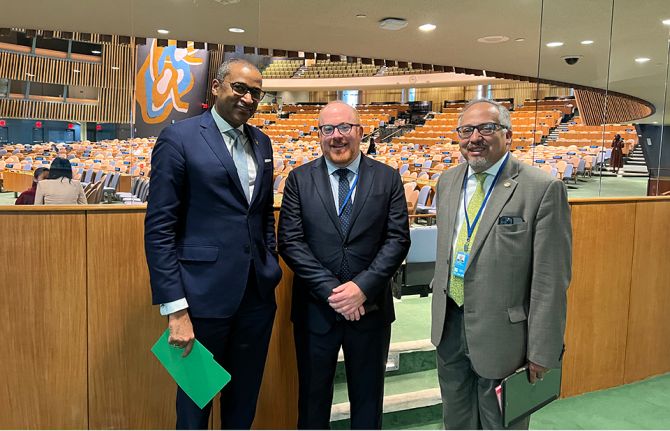
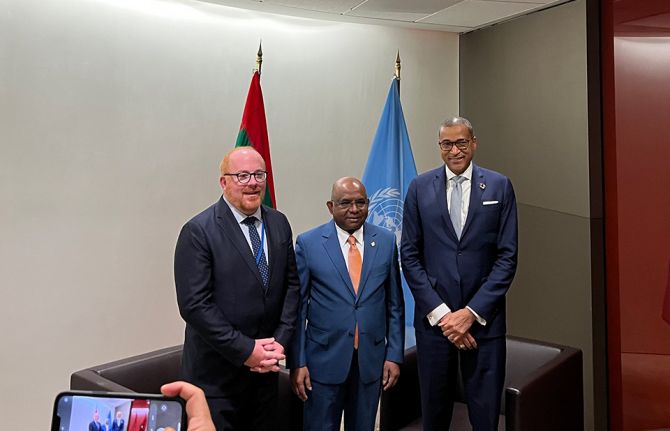
Feature Story
One year into the bold new strategy on HIV/AIDS, it is vital to speed up progress, say UN Member States
10 June 2022
10 June 2022 10 June 2022One year after adopting a new Political Declaration on HIV and AIDS: Ending Inequalities and Getting on Track to End AIDS by 2030, United Nation’s Member States have highlighted the need to work together to speed up progress on implementation.
In advance of the meeting, the UN Secretary General released a report entitled Tackling inequalities to end the AIDS pandemic on the implementation of the political declaration on HIV/AIDS. The report sets out how inequalities and insufficient investment “leave the world dangerously underprepared to confront the pandemics of today and tomorrow”
The AIDS pandemic is responsible for more than 13,000 deaths every week.
The Joint United Nations Programme on HIV/AIDS (UNAIDS) data show that HIV infections and AIDS-related deaths are not currently declining fast enough to end the pandemic by 2030 as pledged.
The Secretary General’s report highlights solutions including (a) HIV prevention and societal enablers; (b) community-led responses; (c) equitable access to medicines, vaccines and health technologies; (d) sustainable financing for the AIDS response and wider pandemic prevention, preparedness and response; (e) people-centered data systems and (f) strengthening global partnerships.
The UN Secretary General’s statement to the General Assembly, delivered by Chef de Cabinet Courtenay Rattray, outlined three immediate steps to reverse current trends and get back on track. “First, we need to tackle intersecting inequalities, discrimination and the marginalization of entire communities, which are often exacerbated by punitive laws, policies and practices”. He called for policy reforms to reduce the HIV risks of marginalised communities including sex workers, people who inject drugs, prisoners, transgender people and gay men. He noted how stigma is obstructing public health: “Stigmatization hurts everyone. Social solidarity protects everyone”.
The second step is ensuring the sharing of health technologies, including long-acting antiretrovirals, to make them available to people in all countries of the world.
The third step is to increase the resources made available to tackle AIDS. “Investments in AIDS are investments in global health security. They save lives – and money.”
In his opening remarks, the President of the General Assembly, Mr. Abdulla Shahid, noted that “equal access to healthcare is an essential human right to guarantee public health, for all. No one is safe until we are all safe. Striving to achieve the 2025 AIDS targets is an opportunity to work together to increase investments towards public health systems and pandemic responses, and to draw on the hard-learnt lessons from the HIV/AIDS crisis for our recovery from COVID-19, and vice versa.”
Over 35 Member States and Observers made statements during the AIDS review, which included contributions on behalf of the Africa Group, the Caribbean Community and the Central American Integration System and the European Union.
Statements emphasised the urgency of stepping up collective action to get on track to meet the 2025 targets, and the importance of an inequalities lens to ensure a successful HIV response.
The President of the General Assembly, the Secretary General, the Africa group, the EU and several Member States stressed the importance of fully financing the HIV response and strengthening investment in Global Health.
The Africa Group, along with many others, spoke about addressing stigma and discriminatory laws which keep people from accessing health care and social services.
The debate made clear that the end of AIDS is possible, but only if countries worked together and were courageous in addressing inequalities. “The most important message today,” noted the Secretary General’s conclusion, “is that if we work together to tackle the inequalities that perpetuate HIV/AIDS, we can still end it as a public health threat by 2030.”
All said in under one minute. This is huge and unequivocal.
— Ben Phillips (@benphillips76) June 10, 2022
The Chef de Cabinet delivers to the UN General Assembly the urgent insistence from the UN Secretary-General that the technologies for new long-acting HIV medicines must be shared globally now. There is no time to lose. pic.twitter.com/t1DWlPsdB3
Related

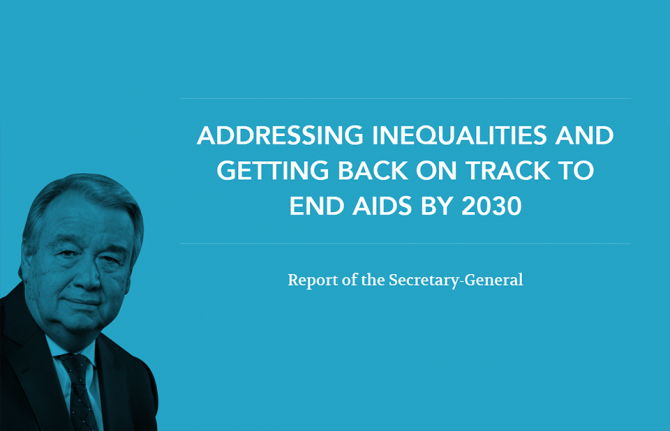
Press Release
United Nations Secretary-General calls for a greater focus on ending inequalities to end AIDS
30 April 2021 30 April 2021Forty years since the first AIDS cases were reported and just weeks before the United Nations General Assembly High-Level Meeting on AIDS, the United Nations Secretary-General has released a new report with recommendations and targets to get the world back on track to end AIDS
NEW YORK, 30 April 2021—The United Nations Secretary-General, António Guterres, has warned that despite intensive action and progress made against HIV in some places and population groups, HIV epidemics continue to expand in others and issued a set of 10 key recommendations.* If followed by all countries, this will end the AIDS pandemic as a public health threat by 2030 as part of the Sustainable Development Goals. In a new report, Addressing inequalities and getting back on track to end AIDS by 2030, the United Nations Secretary-General urges the world to address the inequalities that are slowing progress.
“It is imperative to break out of an increasingly costly and unsustainable cycle of achieving some progress against HIV but ultimately not enough to bring about an end to the pandemic,” said Mr Guterres in the report. “Inequalities are the key reason why the 2020 global targets were missed. By ending inequalities, transformative outcomes can be achieved for people living with HIV, communities and countries.”
The global targets set out in the General Assembly’s 2016 Political Declaration on Ending AIDS were missed by a long way, allowing the AIDS pandemic to grow in many regions and countries. The staggering 1.7 million new HIV infections that occurred in 2019 are more than three times higher than the 2020 target of less than 500 000 new infections. In addition, the 690 000 AIDS-related deaths in 2019 far exceed the 2020 target of reducing deaths to fewer than 500 000 a year.
“Ending AIDS as a public health threat by 2030 is still within reach—many countries are showing that rapid progress against HIV is possible when evidence-informed strategies and human rights-based approaches are adopted,” said UNAIDS Executive Director Winnie Byanyima. “But it requires bold political leadership to challenge and address the social injustices and inequalities that continue to make certain groups of people and entire communities highly vulnerable to HIV infection.”
The report notes that COVID-19 has caused additional setbacks. The United Nations Secretary-General warned that COVID-19 is not an excuse for missing AIDS targets, but rather a stark warning to the countries that they can no longer afford to underinvest in pandemic preparedness and responses.
At the same time, the COVID-19 pandemic has underscored the many spill-over benefits of HIV investments in health and development. Community-led service delivery pioneered by the HIV response is helping to overcome the extraordinary impediments created by COVID-19.
The set of 10 recommendations to get the world back on track include: addressing inequalities and reaching all people living with or at risk of HIV infection to reduce the annual new HIV infections to under 370 000 and annual AIDS-related deaths to under 250 000 by 2025; prioritizing HIV prevention to ensure that 95% of people at risk of HIV infection have access to effective HIV prevention options by 2025; and eliminating new HIV infections among children.
The report underscores that addressing social and structural factors that perpetuate inequalities is key. It highlights, for example, how gender inequality, underpinned by harmful gender norms, restricts women’s use of HIV and sexual and reproductive health services by perpetuating gender-based violence and limiting decision-making power, including the ability of women and girls to refuse unwanted sex, negotiate safer sex and mitigate HIV risk.
It also shows how vulnerable, marginalized and criminalized communities, such as gay men and other men who have sex with men, people who use drugs, sex workers, transgender people, prisoners and migrants, also remain at higher risk of HIV infection than the general population because they are not receiving essential information and HIV treatment, prevention and care services.
The United Nations Secretary-General describes how communities of people living with, at risk of and affected by HIV are the backbone of the HIV response. Initiatives led by people living with HIV, women, key populations, young people and other affected communities have identified and addressed key inequalities and service gaps, advocated for the rights of their constituents and expanded the reach, scale and quality of health services.
In the report, Mr Guterres applauds UNAIDS’ recently adopted Global AIDS Strategy 2021–2026: End Inequalities, End AIDS. “The lessons from the countries, cities and communities that successfully fast-tracked their HIV responses over the last five years are at the heart of the UNAIDS Global AIDS Strategy 2021–2026,” said Mr Guterres. “The global AIDS community and UNAIDS have used an inequalities lens to develop the strategy, with new targets that are ambitious, granular and tailored to reach the furthest behind first.”
The report comes 25 years after the creation of UNAIDS and describes how COVID-19 has exposed social inequalities and health system weaknesses. The United Nations Secretary-General says that the world should leverage the experience from responding to the AIDS pandemic to strengthen health systems across the world and improve pandemic preparedness. He also calls for enhanced global solidarity to close the HIV resource gap and increase annual HIV investments in low- and middle-income countries to US$ 29 billion by 2025.
*The 10 recommendations in the United Nations Secretary-General’s report:
- Reduce and end the acute and intersecting inequalities that are obstructing progress to end AIDS.
- Prioritize HIV prevention and ensure that 95% of people at risk of HIV infection have access to and use appropriate, prioritized, person-centred and effective combination prevention options by 2025.
- Close gaps in HIV testing, treatment and viral suppression that are limiting the impact of HIV responses and achieve by 2025 the 95–95–95 testing and treatment targets within all subpopulations, age groups and geographic settings, including children living with HIV.
- Eliminate vertical HIV transmission and end paediatric AIDS.
- Put gender equality and the human rights of women and girls in all their diversity at the forefront of efforts to mitigate the risk and impact of HIV.
- Implement the GIPA (Greater Involvement of People Living with HIV/AIDS) principle and empower communities of people living with HIV, women, adolescents and young people and key populations to play their critical HIV response roles.
- Respect, protect and fulfil the human rights of people living with, at risk of and affected by HIV and ensure by 2025 that less than 10% of people living with HIV and key populations experience stigma and discrimination.
- Enhance global solidarity to close the HIV response resource gap and increase annual HIV investments in low- and middle-income countries to US$29 billion by 2025.
- Accelerate progress towards universal health coverage and strong primary health care systems, build forward better and fairer from COVID-19 and humanitarian crises, and strengthen global health security and future pandemic preparedness.
- Leverage the 25 years of experience, expertise and mandate of the Joint United Nations Programme on HIV/AIDS (UNAIDS) in building multisectoral, multi-stakeholder and rights-based collaborative action to end AIDS and deliver health for all as global public good.
UNAIDS
The Joint United Nations Programme on HIV/AIDS (UNAIDS) leads and inspires the world to achieve its shared vision of zero new HIV infections, zero discrimination and zero AIDS-related deaths. UNAIDS unites the efforts of 11 UN organizations—UNHCR, UNICEF, WFP, UNDP, UNFPA, UNODC, UN Women, ILO, UNESCO, WHO and the World Bank—and works closely with global and national partners towards ending the AIDS epidemic by 2030 as part of the Sustainable Development Goals. Learn more at unaids.org and connect with us on Facebook, Twitter, Instagram and YouTube.
Contact
UNAIDS GenevaSophie Barton-Knott
tel. +41 79 514 6896
bartonknotts@unaids.org
UNAIDS Geneva
Michael Hollingdale
tel. +41 79 500 2119
hollingdalem@unaids.org
Press centre
Download the printable version (PDF)
Documents
Report of the UN Secretary-General on the Implementation of the Declaration of Commitment on HIV/AIDS and the political declarations on HIV/AIDS (Seventy-fifth session of the General Assembly) 31 March 2021 - A/75/836
31 March 2021
The present report, submitted pursuant to General Assembly resolution 70/266, provides information on progress achieved towards the commitments made in the Political Declaration on HIV and AIDS: On the Fast Track to Accelerating the Fight against HIV and to Ending the AIDS Epidemic by 2030. This document is also available in Arabic and Chinese.

